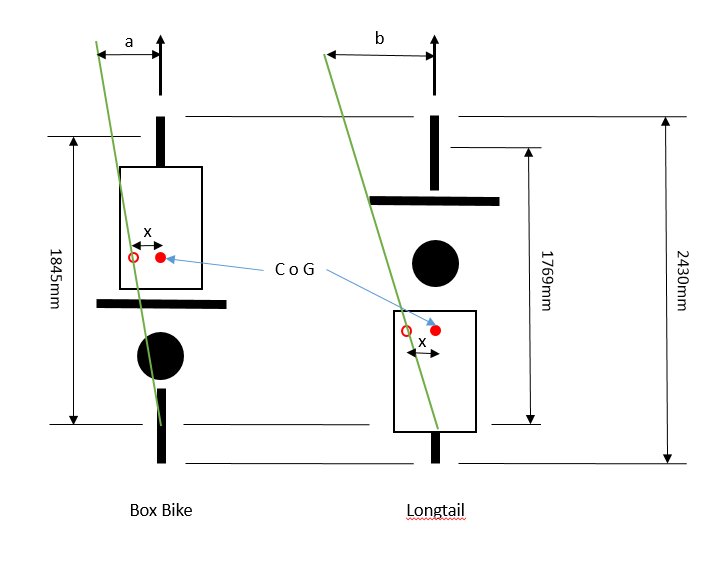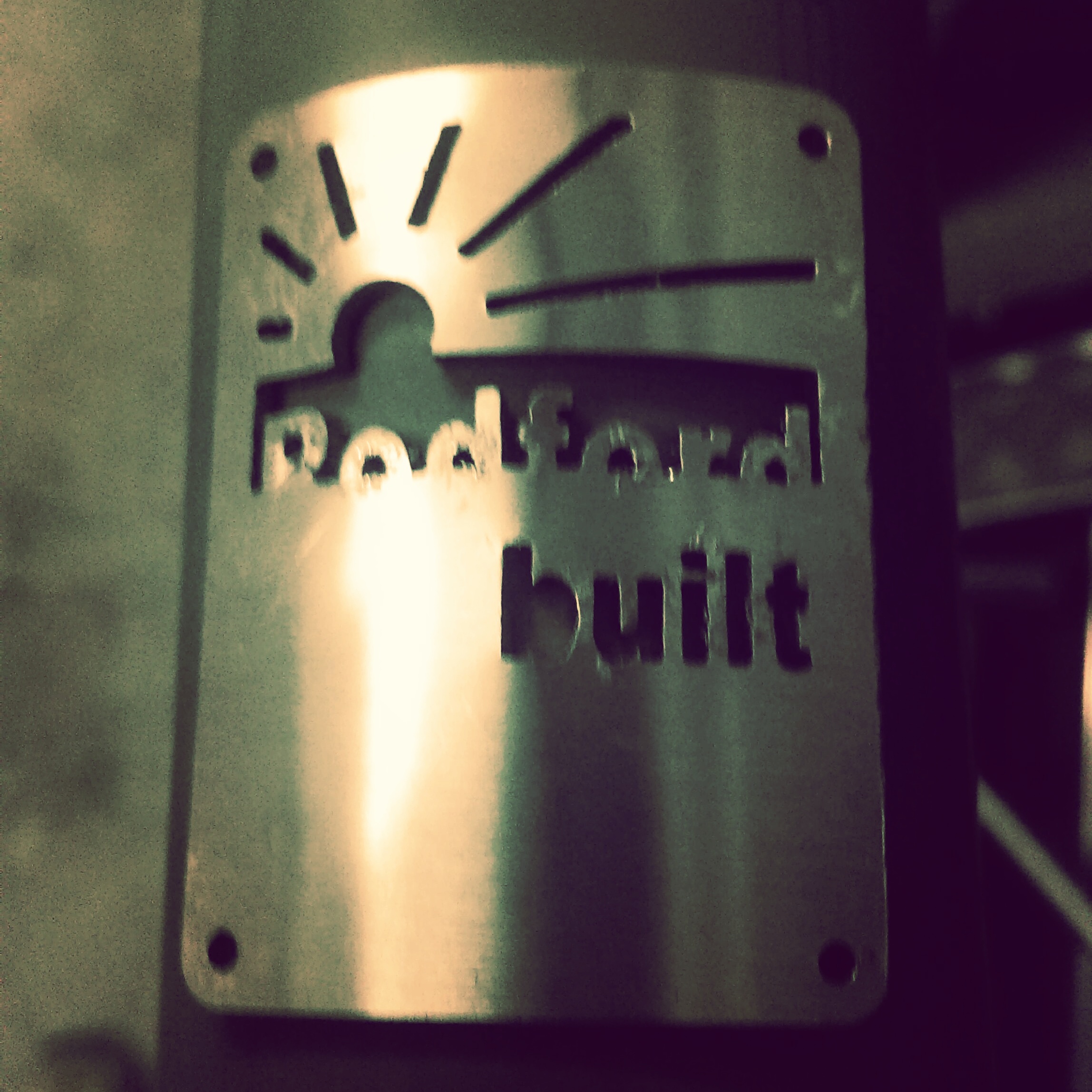It is a surprising fact that even though the bike is 200 years old this year (2017), it is still difficult to explain exactly how it works. It is a case that we know what works and what doesn’t and how to build a really good bike; but not really why.However one thing is for sure, learning to ride a bike is tricky but once mastered it seems you can ride any single track vehicle after a moment’s practice.So what exactly is going on when you balance a bike?It is a fact that steering the bike provides two functions. Firstly it helps you travel in a chosen direction but secondly it helps you balance. When children first learn to ride, they focus on balancing the bike and a wide open space is recommended, because they often travel in no particular direction as they try to stay upright. However, with practice a rider will develop an ability to both steer and balance the bike via the handlebars.The balancing of a bike in this way is similar to balancing a broom upright on your fingertip (or on your chin if you work in a circus). By moving the bottom of the broom around you can keep it upright. Actually what you are doing is ensuring that the broom’s centre of gravity is kept directly over your hand, even if the broom is knocked you can recover it by moving the bottom under the centre of gravity once more.Taking this analogy one step further, it is possible to move the broom around the garden by first moving the bottom in the opposite direction to the way you want to go. This starts the broom falling in the direction you want to go and then you can run along with the broom leading the way until you want to stop and then you will put the bottom of the broom back under the centre of gravity to make it stop.The same happens when you steer a bike. To start a turn you first steer the opposite way, this leans the bike into the turn, then you steer into the bend to hold the required lean. To straighten up again you turn further into the bend to bring the centre of gravity of the bike back into the centreline, standing it up in the process. This is known as counter steering and it is the fundamental process by which all single track vehicles steer, and the reason why learning to balance a bike is difficult at first. Some people don’t believe they are steering the opposite way to start a bend but if look what you are doing when you ride a bike you will see it is true, it is a momentary movement but it is there. If you are still in doubt try riding a motorbike where it becomes more obvious and more necessary because the bike's mass is much greater. This counter steering is the reason riding very close to an edge on a bike can be nerve racking because it is difficult to judge how much room you need on each side to counter steer and initiate a balancing move.

So why is this interesting. Well is it of particular interest when looking at cargo bikes as they can be longer and heavier once loaded and people can see them as challenging to ride. However the balancing principles are the same.One interesting thing is that the front loaded box bike which looks the most unconventional to ride actually has the steering wheel (ie the wheel that you use to balance the bike) directly under the load. This is advantageous when it comes to maintaining balance, particularly with children or pets on board which can shift around. If the bike is tipped or pushed by a cross wind, the front wheel can be positioned back under the bike’s centre of gravity within a few rotations of the wheel and the sideways shift of the bike during this time is relatively small. By contrast, long chassis bikes with the cargo at the back are balanced in the same way, but the reaction to a balancing input of the steering is slower because the steering wheel is further from the cargo mass. In this case a similar tip of the long bike will require the front to move much further sideways to keep balance.This diagram should make things a little clearer.  The sketch shows a box bike on the left and a long tail bike on the right. Both are the same overall length although the wheel base on the box bike is a little longer due to the smaller front wheel.Looking first at the centre of gravity dot (CoG) you can see in this scenario it has shifted to the left by a distance of “x” perhaps because of a moving child. This will cause the bike to start to turn left and to straighten it up again, we need to get the centreline of the bike back under the centre of gravity. This is shown by the long green line. You can see in the case of the box bike the front will have to move a distance of “a” for the bike to regain its balance, but in the case of the longtail it is distance “b” which is further.In the real world this means that the longtail bike will require greater steering input and more room generally to keep the bike balanced.Front loaded box bikes also carry the cargo low down between the wheels which further reduces balance problems.At Rodford we manufacture both longtail and box bikes and a range of other transport cycles.Call in and try and them to find the one that best suits your needs.Track stand........Finally let's mention the track stand. This is when a rider balances the bike at a standstill and without forward motion it is not possible to move the bike under the centre of gravity to maintain balance. Instead, the rider will stand on the pedals holding the brakes. The reason this works is that with the brakes locked on, the pedals now act as balancing aids allowing the rider to press on one side of the bike or the other to maintain balance, without the bike moving. In reality a rider will combine pedal pressure and brake activation, occasionally releasing the brake to move the bike to maintain balance. This is a highly complicated thing to do but surprisingly possible for most people.
The sketch shows a box bike on the left and a long tail bike on the right. Both are the same overall length although the wheel base on the box bike is a little longer due to the smaller front wheel.Looking first at the centre of gravity dot (CoG) you can see in this scenario it has shifted to the left by a distance of “x” perhaps because of a moving child. This will cause the bike to start to turn left and to straighten it up again, we need to get the centreline of the bike back under the centre of gravity. This is shown by the long green line. You can see in the case of the box bike the front will have to move a distance of “a” for the bike to regain its balance, but in the case of the longtail it is distance “b” which is further.In the real world this means that the longtail bike will require greater steering input and more room generally to keep the bike balanced.Front loaded box bikes also carry the cargo low down between the wheels which further reduces balance problems.At Rodford we manufacture both longtail and box bikes and a range of other transport cycles.Call in and try and them to find the one that best suits your needs.Track stand........Finally let's mention the track stand. This is when a rider balances the bike at a standstill and without forward motion it is not possible to move the bike under the centre of gravity to maintain balance. Instead, the rider will stand on the pedals holding the brakes. The reason this works is that with the brakes locked on, the pedals now act as balancing aids allowing the rider to press on one side of the bike or the other to maintain balance, without the bike moving. In reality a rider will combine pedal pressure and brake activation, occasionally releasing the brake to move the bike to maintain balance. This is a highly complicated thing to do but surprisingly possible for most people.

